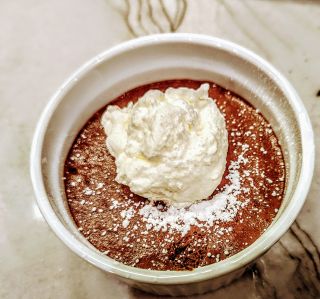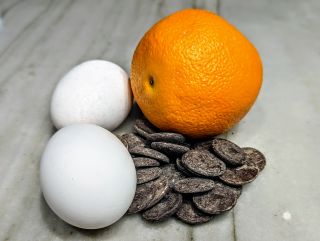Anxiety
Transitions Can Be Tricky
Self-compassion and chocolate can help with them.
Posted September 15, 2023 Reviewed by Gary Drevitch
Key points
- Anxiety can be that feeling of wondering whether the day is going to work and fearing that it won’t.
- Self-compassion encourages us to be kind to ourselves rather than overly critical.

Olliver clung to me as I dropped him off for his third day of second grade. “I’m going to miss you, mama.”
My heart cried quietly.
September is my worst month: a time of year with built-in goodbyes, a change in daily routines, and the end of summer vacation.
Olliver’s recent repeated questions underscore this transition:
“How many days until Halloween?”
“How many days until Christmas?”
“How many days until my birthday?”
“It’s five-and-a-half months until your birthday,” I share.
“You said that same answer yesterday. It has to be less today!” Olliver exclaims adamantly.
“OK: Today it’s 5 months and 14 days until your birthday!”
Olliver’s questions, in light of the transition back to school, told me that he was grounding himself in what was safe and predictable. He was being adaptive—thinking about upcoming celebrations at a time when he was nervous. Olliver knew those good times would come, but he was facing a back-to-school situation that made him anxious.
By asking those questions, Olliver was re-establishing himself in a world he could predict.
These sticky changes got me thinking about anxiety, that feeling of wondering whether the day is going to work and fearing that it won’t. Anxiety is complicated. We all experience it on some level. In some ways, anxiety can be protective and realistic, an adaptive response to the realities of life. We were very anxious about my 92-year-old dad’s health during COVID which kept us disciplined about getting tested before visits. Parents talk with their children about the reality of racism to let them know how to keep themselves safe.
Perhaps we can think about anxiety on a continuum from protection to de-stabilization. Without being able to feel the fear, we’d be in danger, but feeling the fear is not pleasant. Of course, if we find ourselves feeling so anxious that it interferes with work, relationships, and school, seeking a consultation makes sense.
Why is it that so much of what we care about is connected to the things we fear, co-existing together? It’s almost like we can get paralyzed in the face of the fear of a mistaken choice.
Anticipatory regret is like pre-heating an oven at the absolute wrong temperature. Things get heated and we worry they might go too far—burning our hopes.
So where does one begin? There are many starting points—and not one specific ingredient fits all. Making an inroad in some way might offer a path toward momentum.
I’ve often found that when there’s a high-stakes decision to be made, it helps to listen to one’s intuition. That, underneath the frosting of noise, there’s some internal voice that has an idea about the best course of action.
And as we go through experiences that make us anxious, having a trusted person we can talk things over with is invaluable. We don’t have to be alone in navigating the transition.
But what happens when the decision turns out to be the wrong choice? Not all of our choices will be the best because in day-to-day life, we’re choosing all the time. And sometimes we make mistakes because we don’t pay attention to the things that should make us anxious—things that, if we listened to them, might have guided us to a different choice.
The good news is that some mistakes can be undone—like with a well-placed apology.

Neff (2003) defines self-compassion as “being kind and understanding toward oneself in instances of pain or failure rather than being harshly self-critical; perceiving one’s experiences as part of the larger human experience rather than seeing them as isolating; and holding painful thoughts and feelings in mindful awareness rather than over-identifying with them,"
Research indicates that self-compassion can decrease depression and anxiety (Egan et al., 2022). Having self-compassion in the face of messing up the main course, so to speak, invites us to understand that we did the best we could with the information we had in the moment.
“What’s a soothing food?” I asked my chef husband Julian.
“Chocolate,” he said without hesitation.
A review of research has found that “the consumption of cocoa-rich products may improve affect and mood in the short term” (Fusar-Poli, et al., 2022). While researchers cautiously interpret this finding given the small sample size and the low number of studies in its meta-analysis, it suggests the potential healing of incorporating certain ingredients into our lives.
Bittersweet Chocolate and Orange Mousse
The following recipe is from our book Eating Together, Being Together (Clauss-Ehlers & Clauss-Ehlers, 2022). As we make it, I encourage us to reflect on our day and be kind to ourselves.
Ingredients
6 oz bittersweet chocolate (about 70% cacao)
1 cup heavy or whipping cream
4 large eggs, separated
6 Tbsp granulated sugar
1 pinch fine sea salt
zest of 1 small orange
Serves 4.
Please note that this recipe involves consuming raw eggs.
Directions
Have at the ready 4 medium wine glasses. Break or chop the chocolate and place in a medium metal bowl. Fill a saucepan that is smaller than the metal bowl with 2 inches of water and place over medium heat. Set the metal bowl with the chocolate on top of the saucepan and carefully melt the chocolate without stirring it too much. This is called the water bath method. It’s important to keep the chocolate dry and to not overheat it. Both of these scenarios will cause the chocolate to seize—in other words, to turn hard, lumpy, and unusable.
Meanwhile, place the cream in a medium bowl. Use an electric mixer or handheld balloon whisk to whip the cream until firm peaks form. Divide the cream in half and place half in the fridge.
Place the egg yolks and 3 Tbsp of the granulated sugar in another medium bowl. Use an electric mixer or a handheld balloon whisk to vigorously whip the mixture for 3 to 6 minutes, or until the yolks are pale, thick, and viscous. This is called the ribbon stage.
Put the egg whites and a pinch of salt in a large bowl. Use an electric mixer or a handheld balloon whisk to whip the mixture. As the egg whites start to increase in volume, rain 1 Tbsp of the granulated sugar over them. Continue whipping and adding more sugar, 1 Tbsp at a time, until there is no more sugar to add. Continue whipping the egg whites until firm peaks form. This is a basic French meringue.
Now we bring our four elements together. Once the chocolate is melted, add the orange zest, followed by the egg yolks, and mix together with a rubber spatula. Add the unrefrigerated portion of whipped cream and gently fold it in. Add half of the meringue and gently fold it in. Then add the rest of the meringue and gently fold all the ingredients together until you don’t see any more white meringue, then stop mixing.
Use a metal spoon to divide your chocolate mousse among the 4 glasses. Cover each glass with plastic wrap and refrigerate for a few hours. Then remove the plastic wrap and top with the reserved whipped cream.
Self-compassion with every bite!
With gratitude to Dr. Carolyn Moore Newberger for her insight and feedback.
To find a therapist, visit the Psychology Today Therapy Directory.
References
Clauss-Ehlers, J.C.E., & Clauss-Ehlers, C.S. (2022). Eating together, being together: Recipes, activities, and advice from a chef dad and psychologist mom. Princeton Architectural Press.
Egan, S.J., Rees, C.S., Delalande, J., Greene, D., Fitzallen, G., Brown, S., Webb, M., & Finlay-Jones, A. (2022). A review of self-compassion as an active ingredient in the prevention and treatment of anxiety and depression in young people. Administration and Policy in Mental Health and Mental Health Services Research, 49, 385–403. https://doi.org/10.1007/s10488-021-01170-2
Fusar-Poli, L,. Gabbiadini, A., Ciancio, A., Vozza, L., Signorelli, M.S., & Aguglia, E. (2021). The effect of cocoa-rich products on depression, anxiety, and mood: A systematic review and meta-analysis. Critical Reviews in Food Science and Nutrition, 62(28):7905-7916. doi: 10.1080/10408398.2021.1920570.
Neff, K. (2003). The development and validation of a scale to measure self-compassion. Self and Identity, 2, 223–250. doi:10.1080/ 15298860309027




